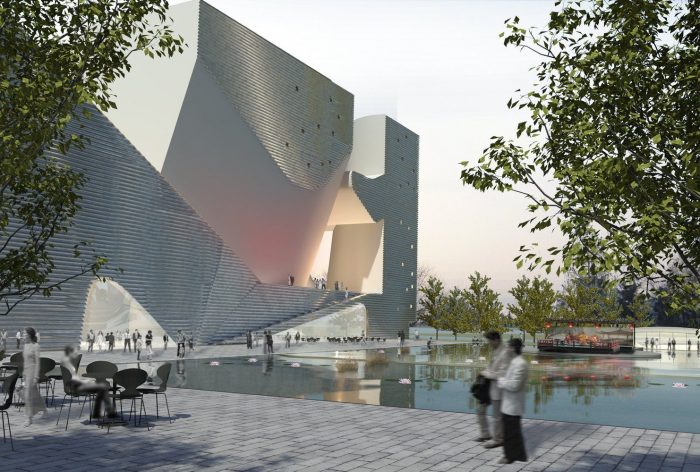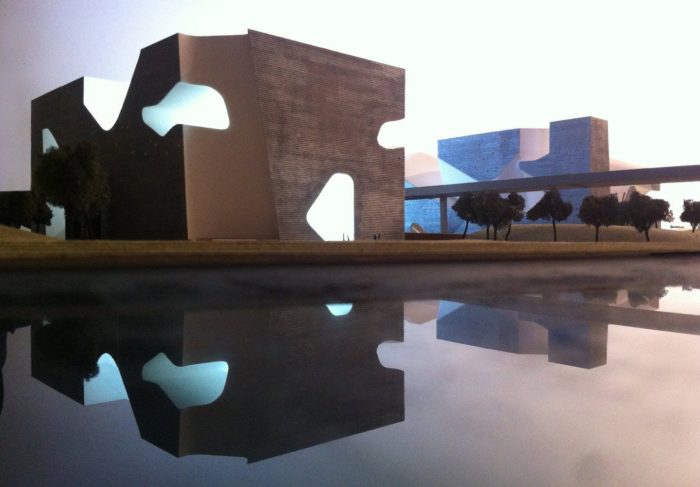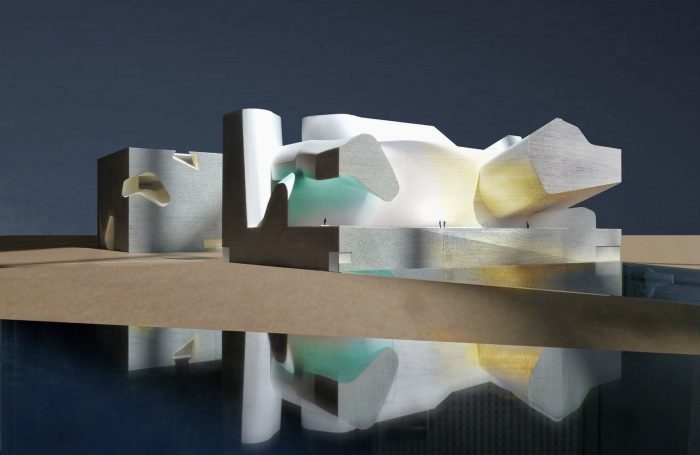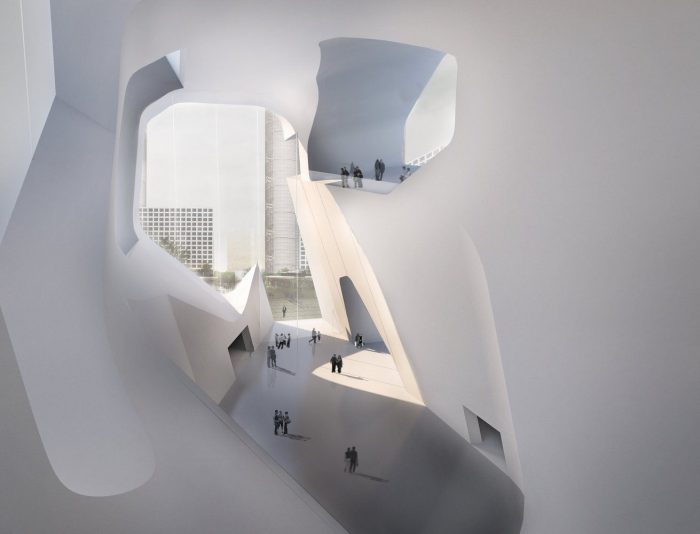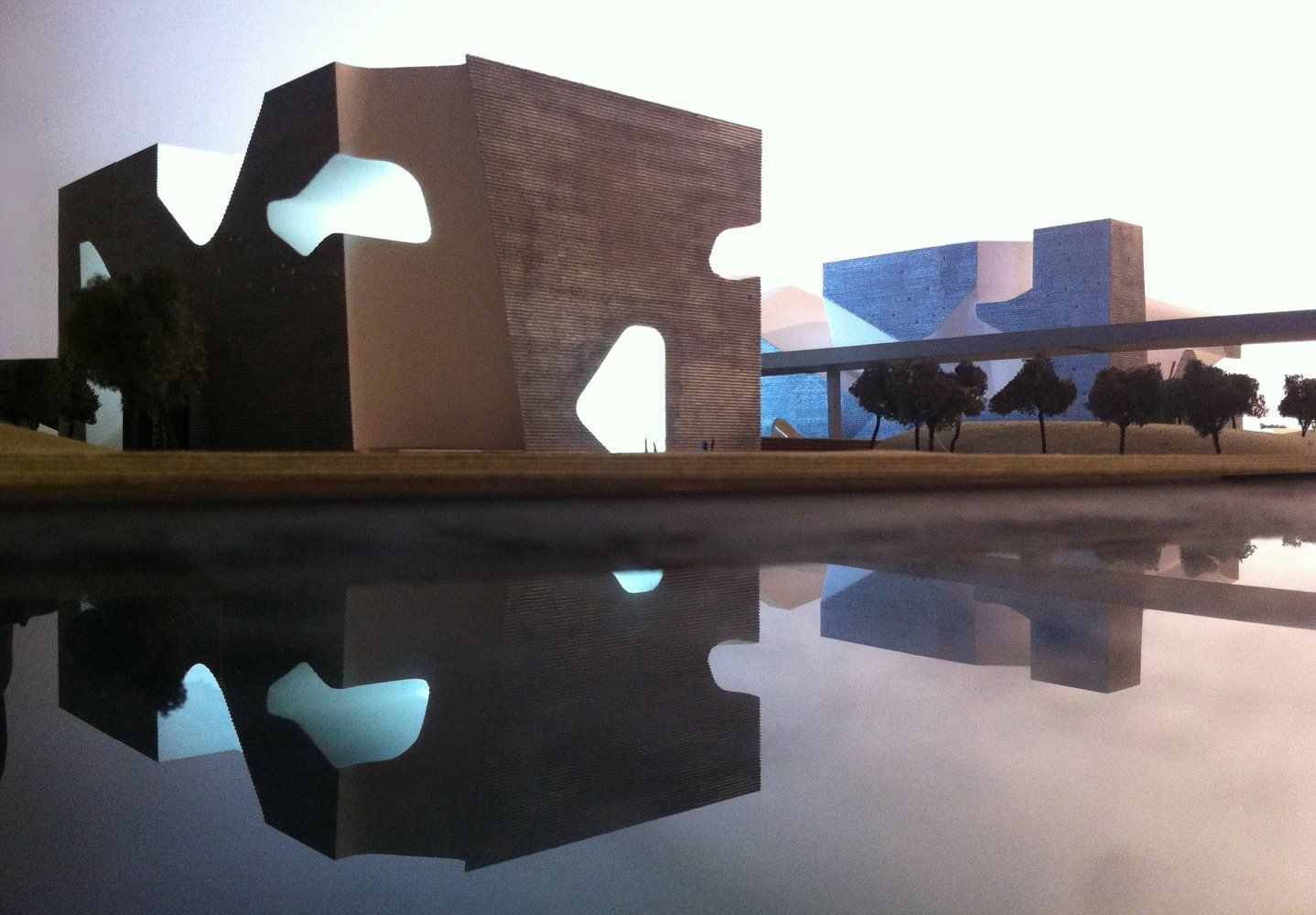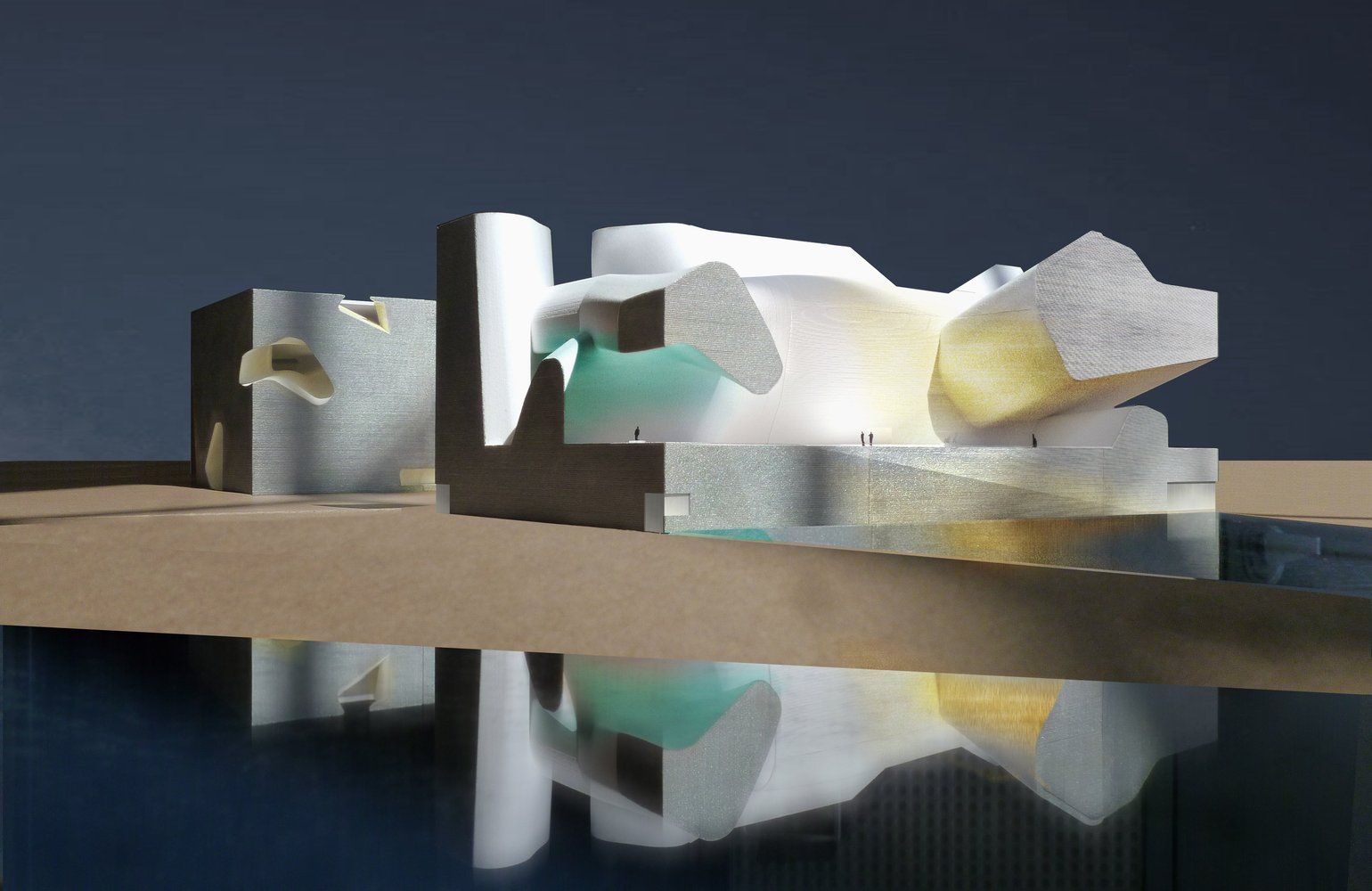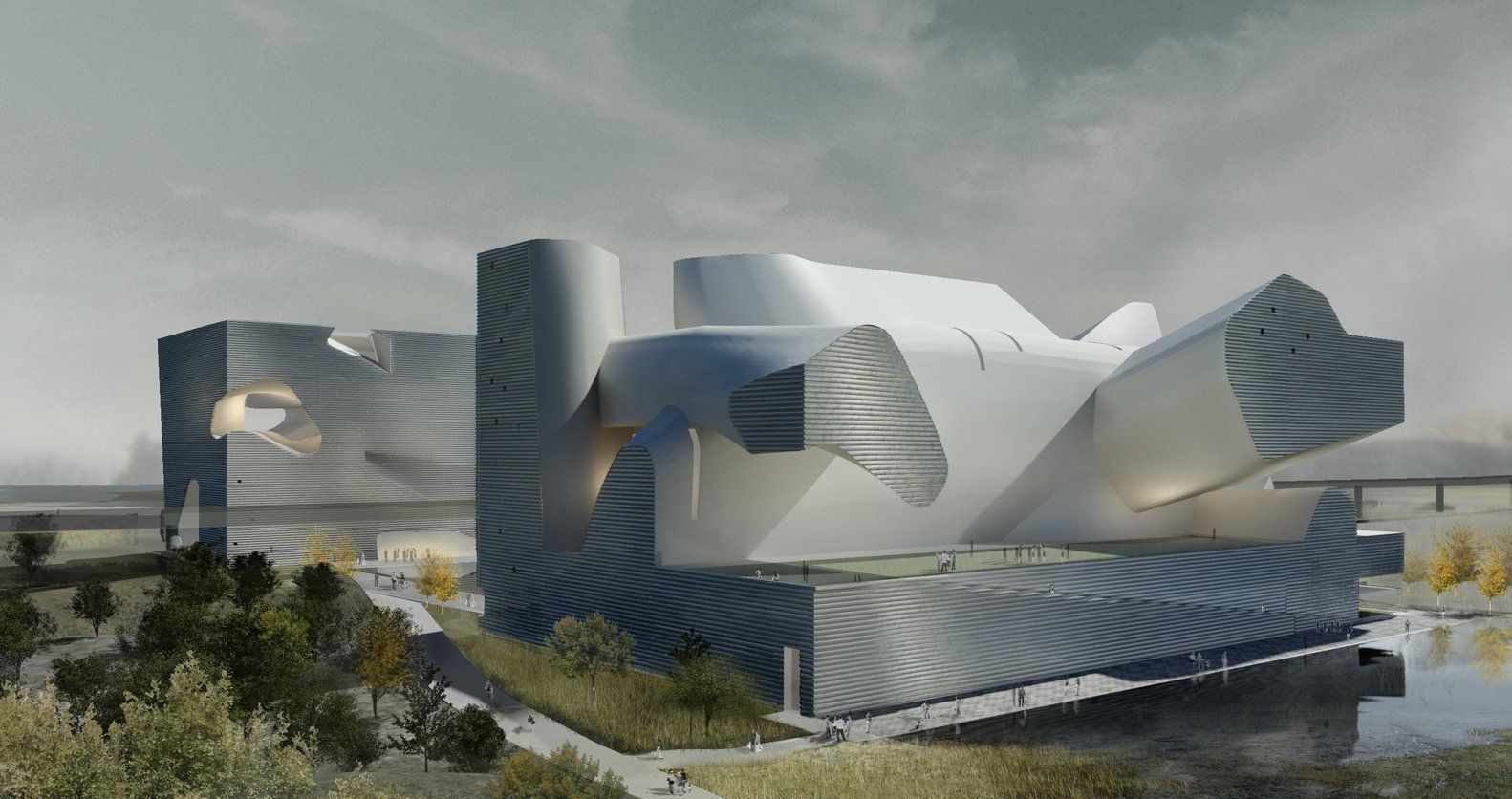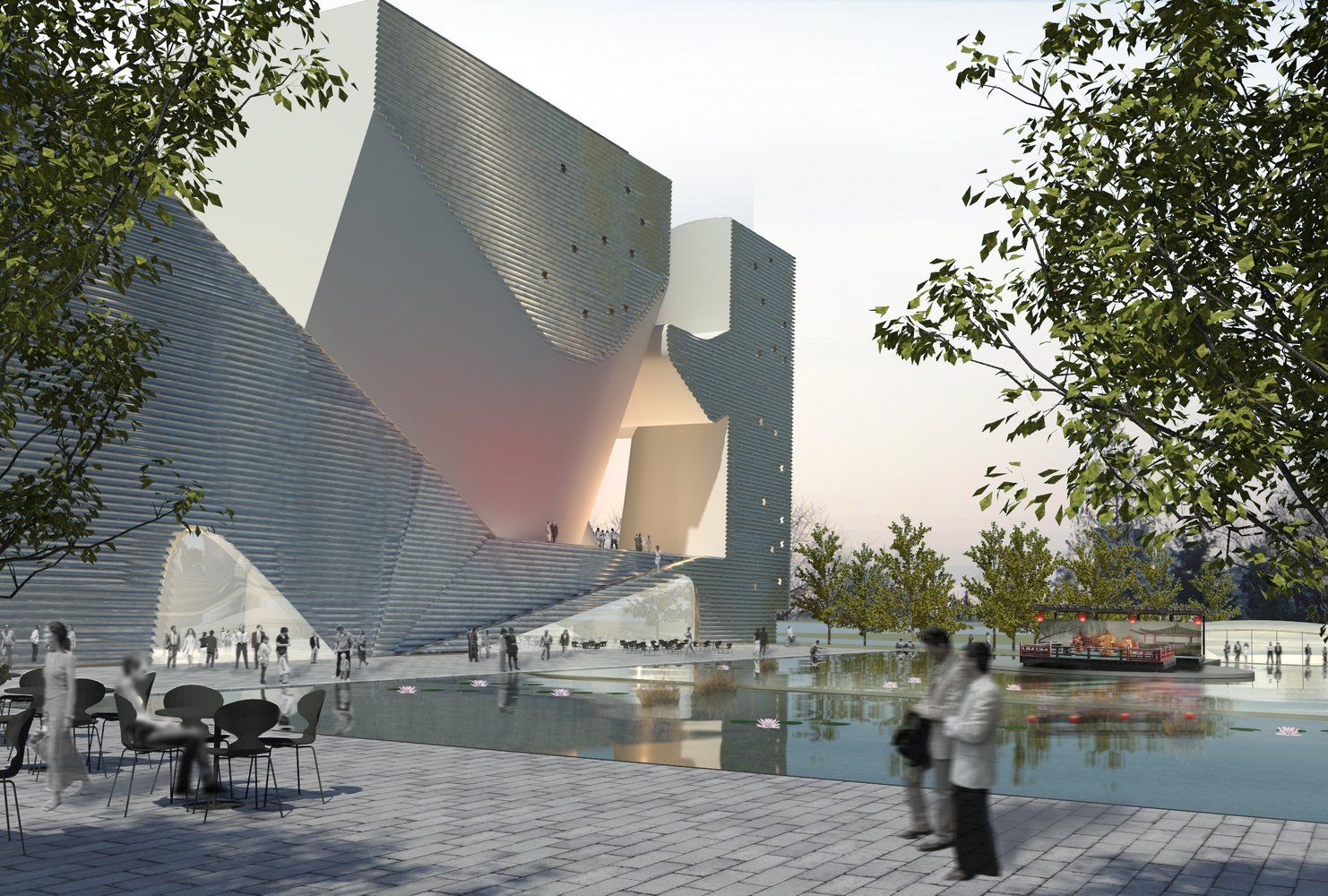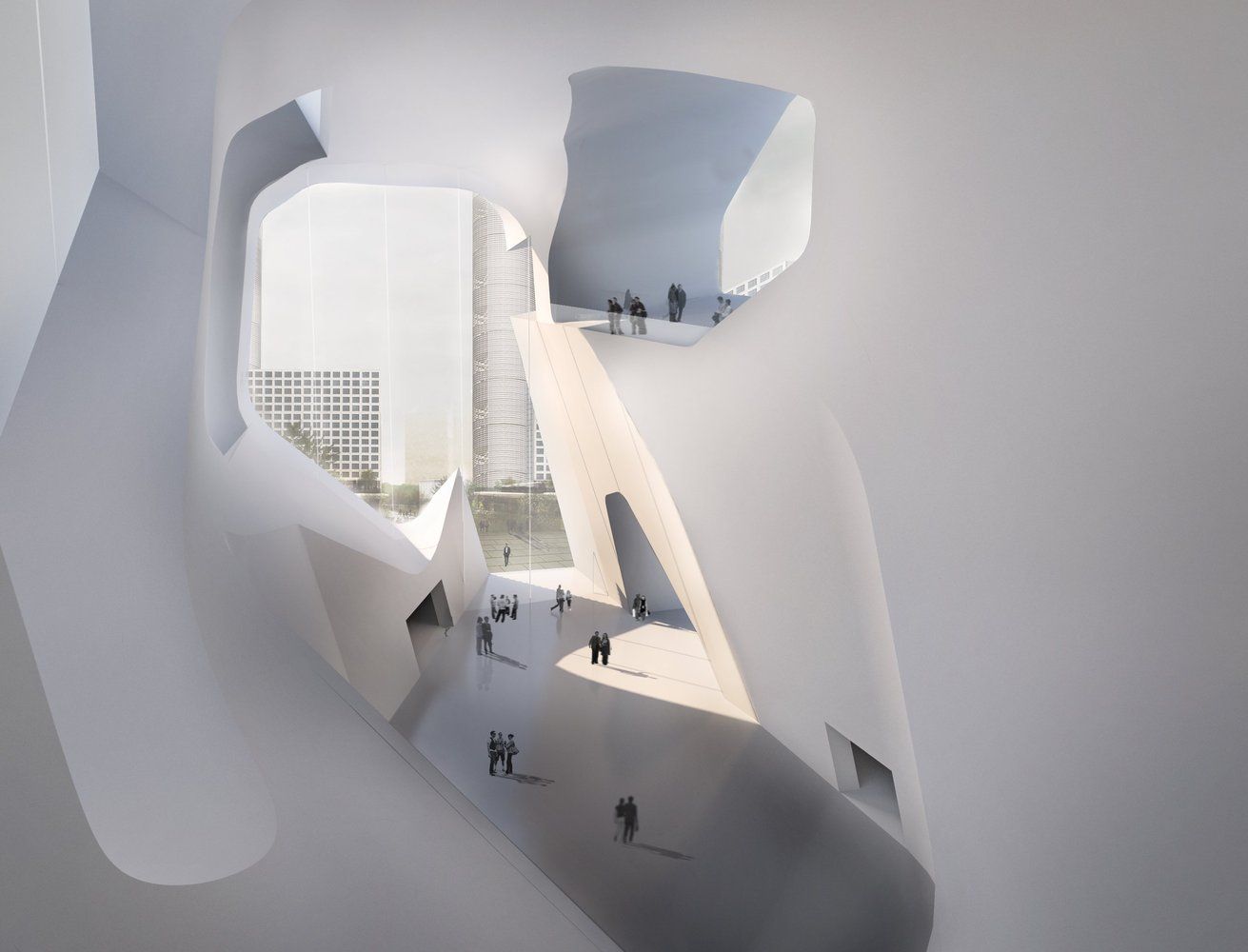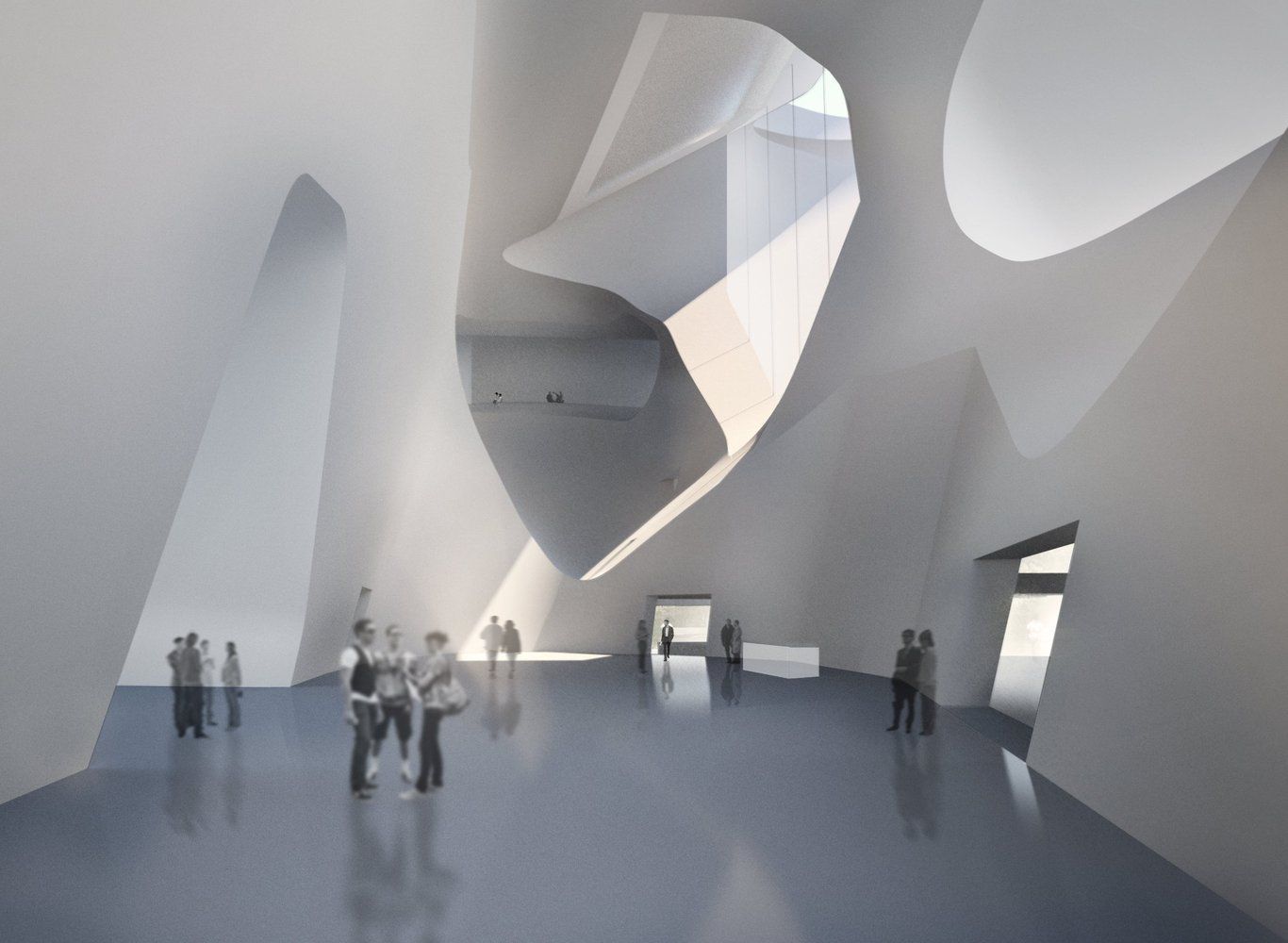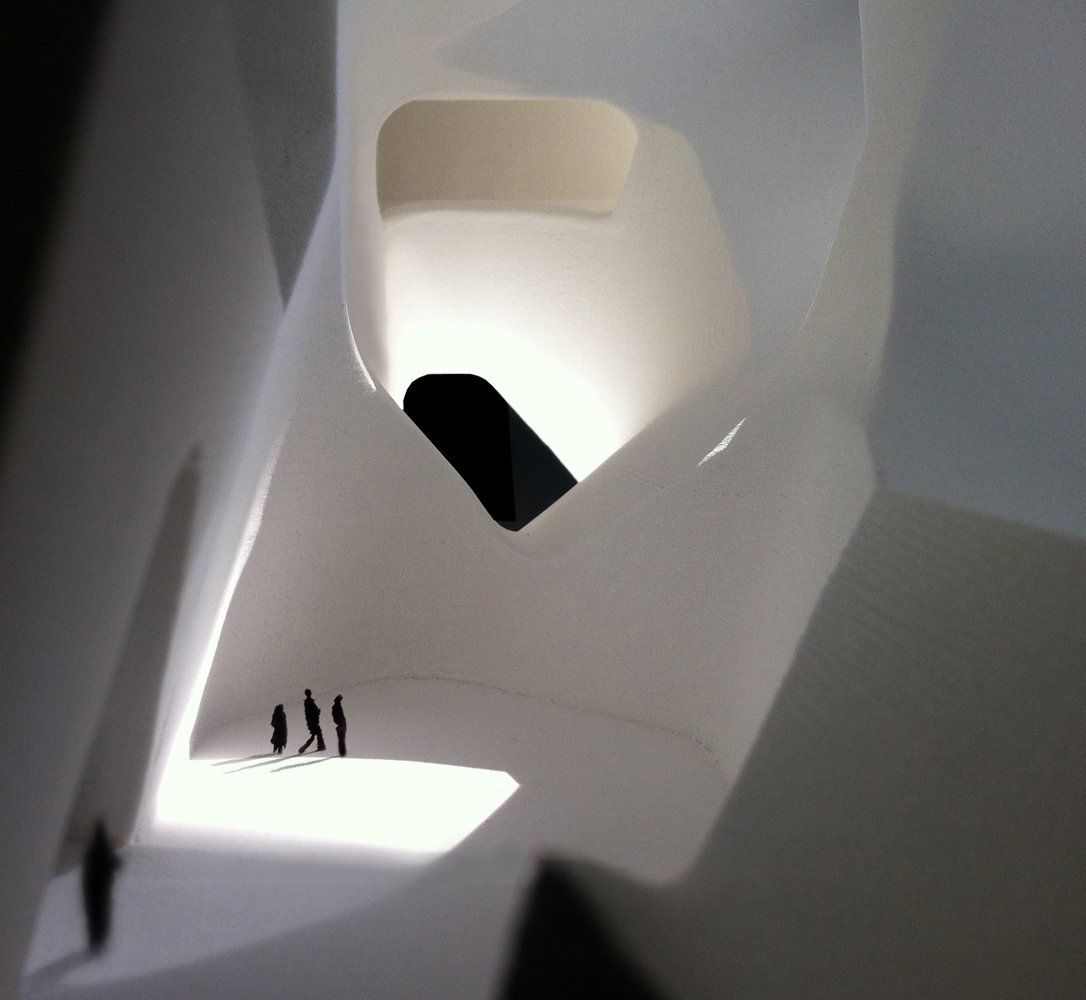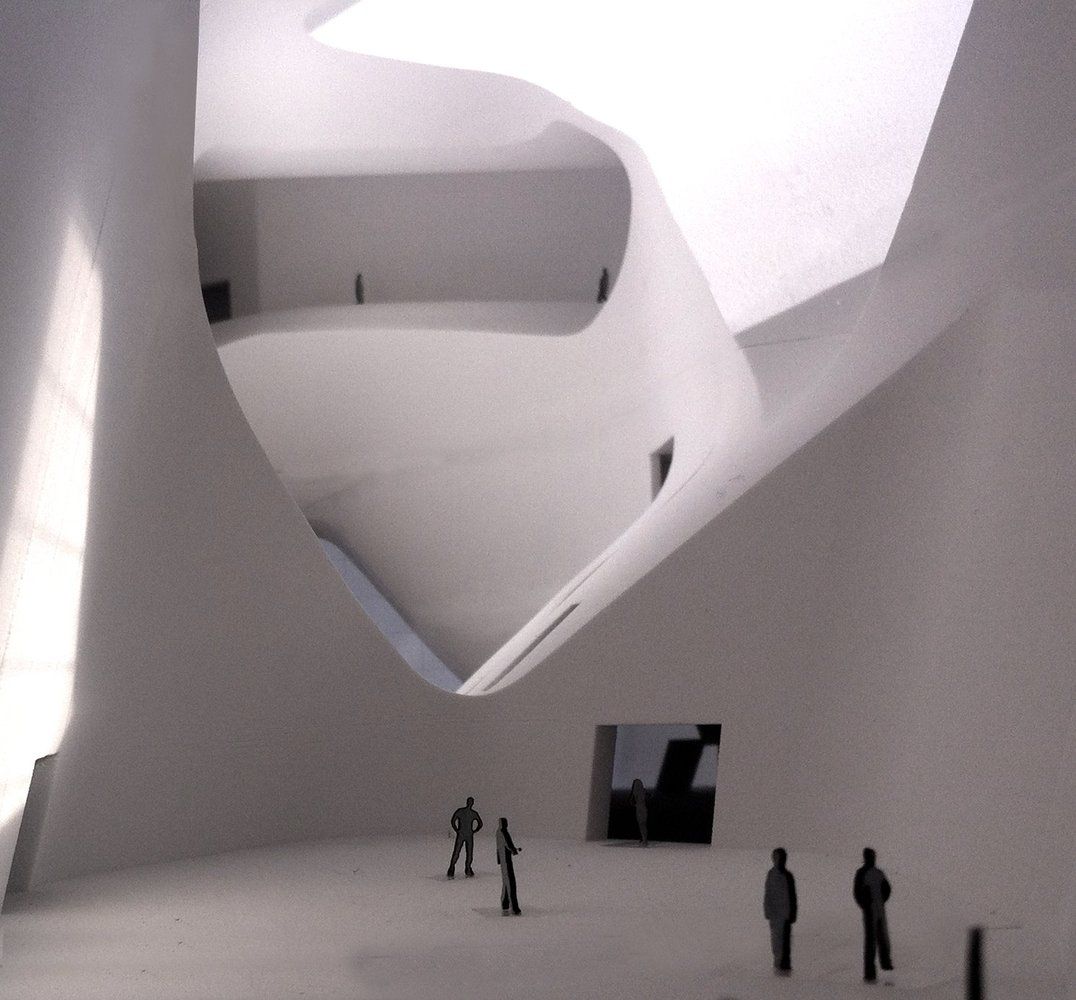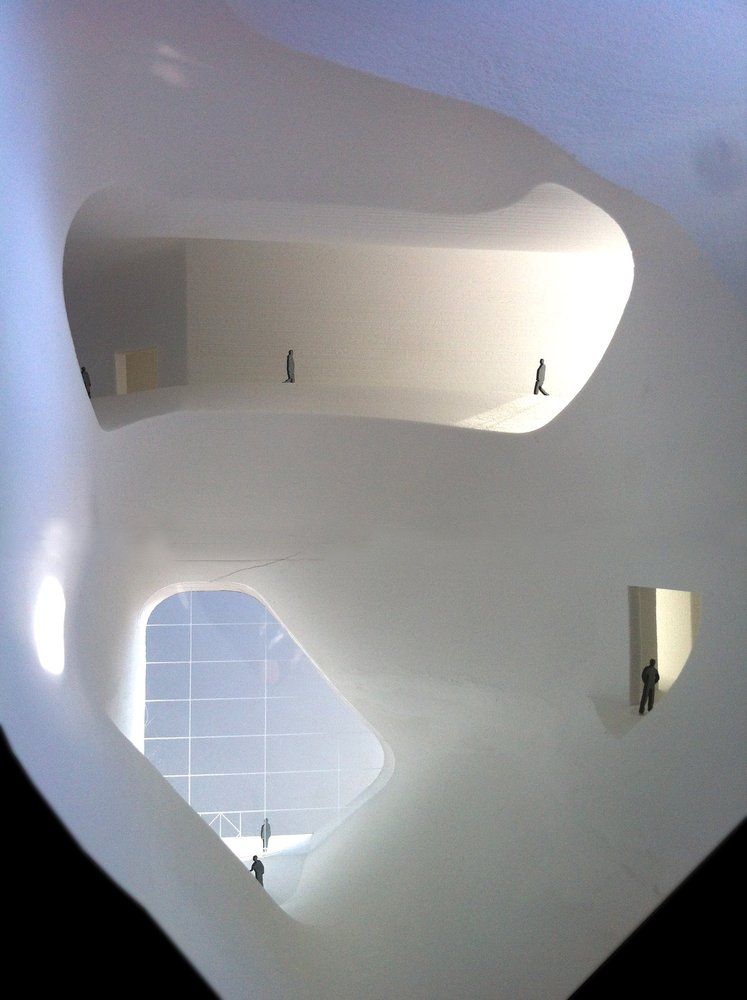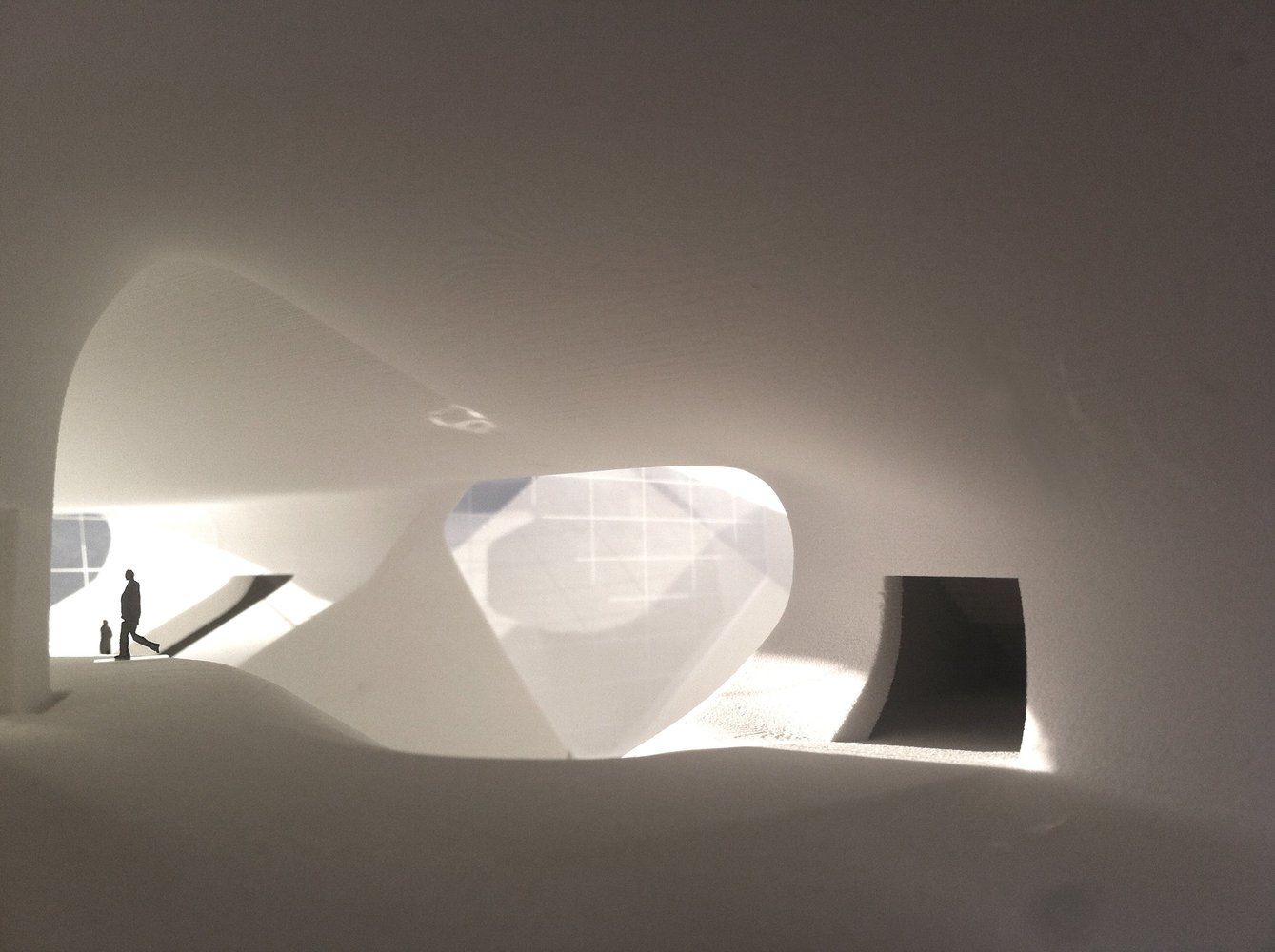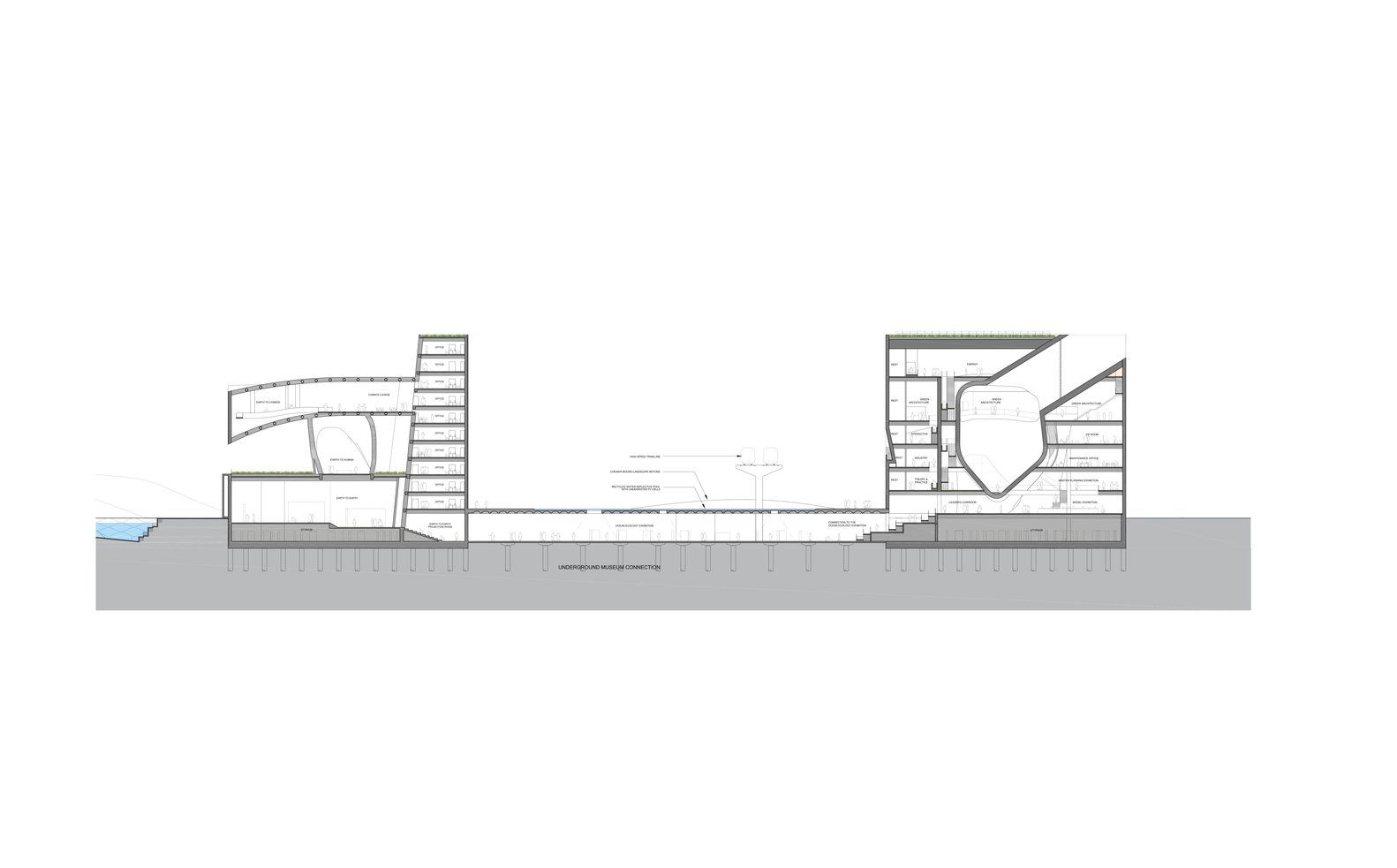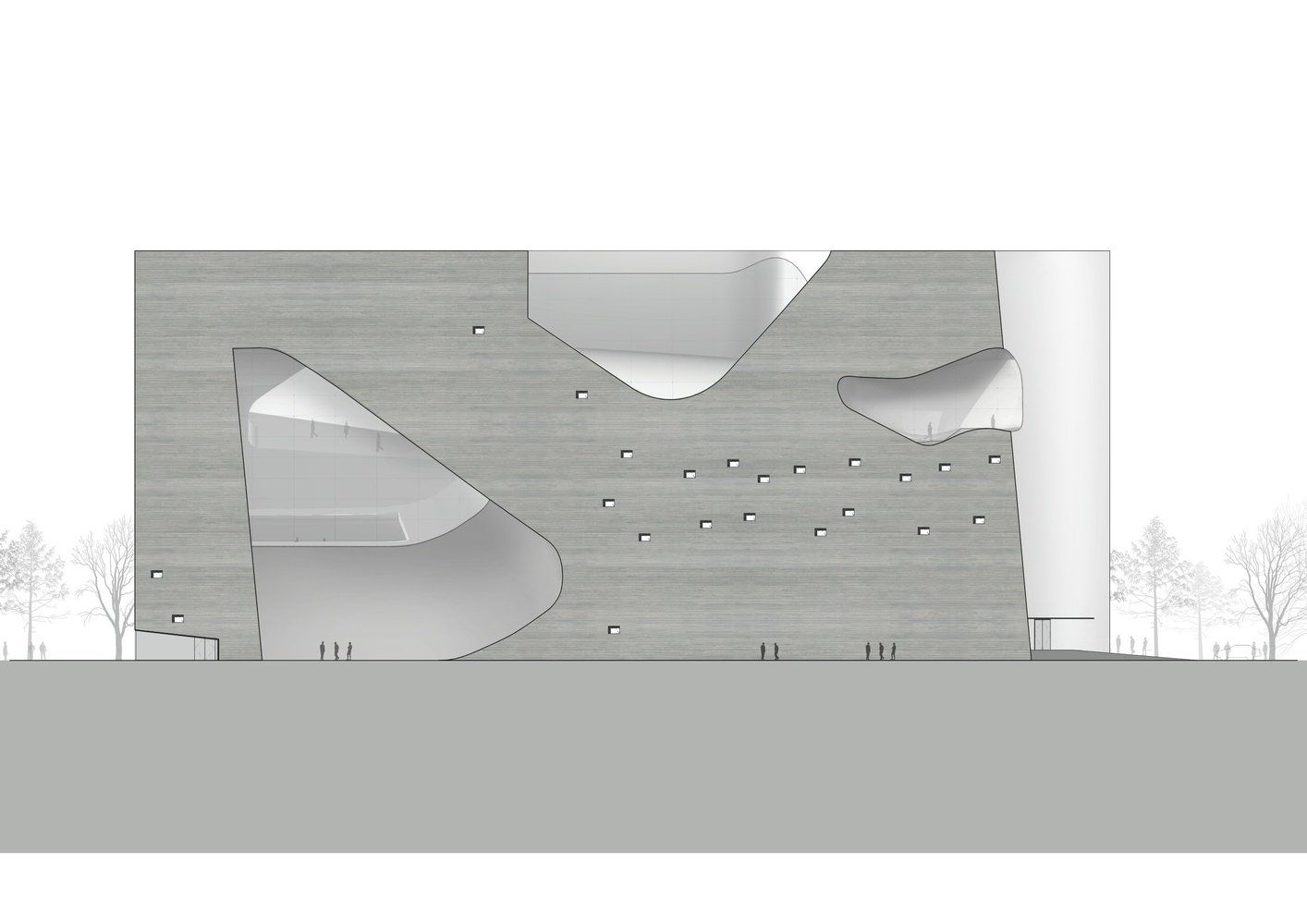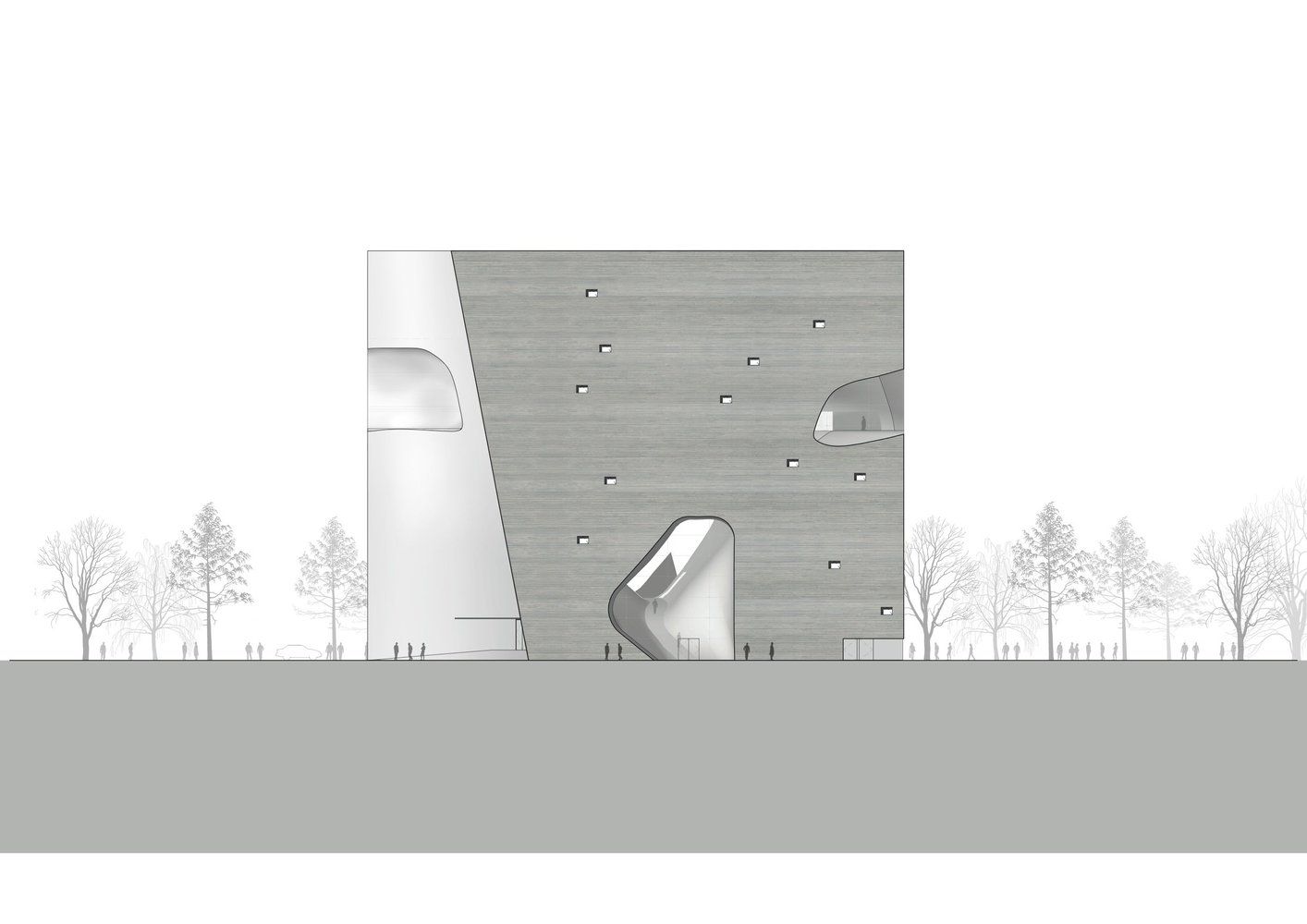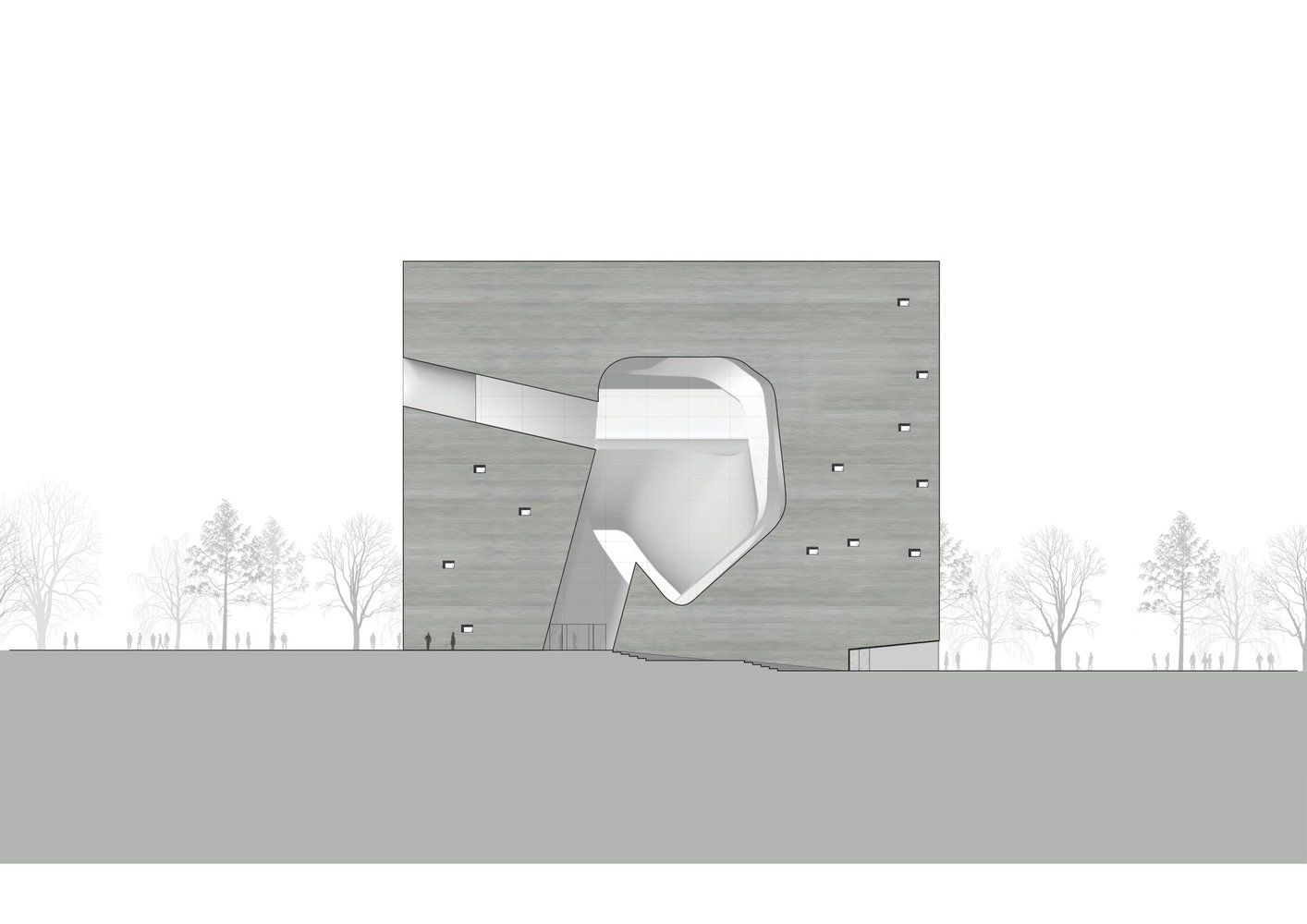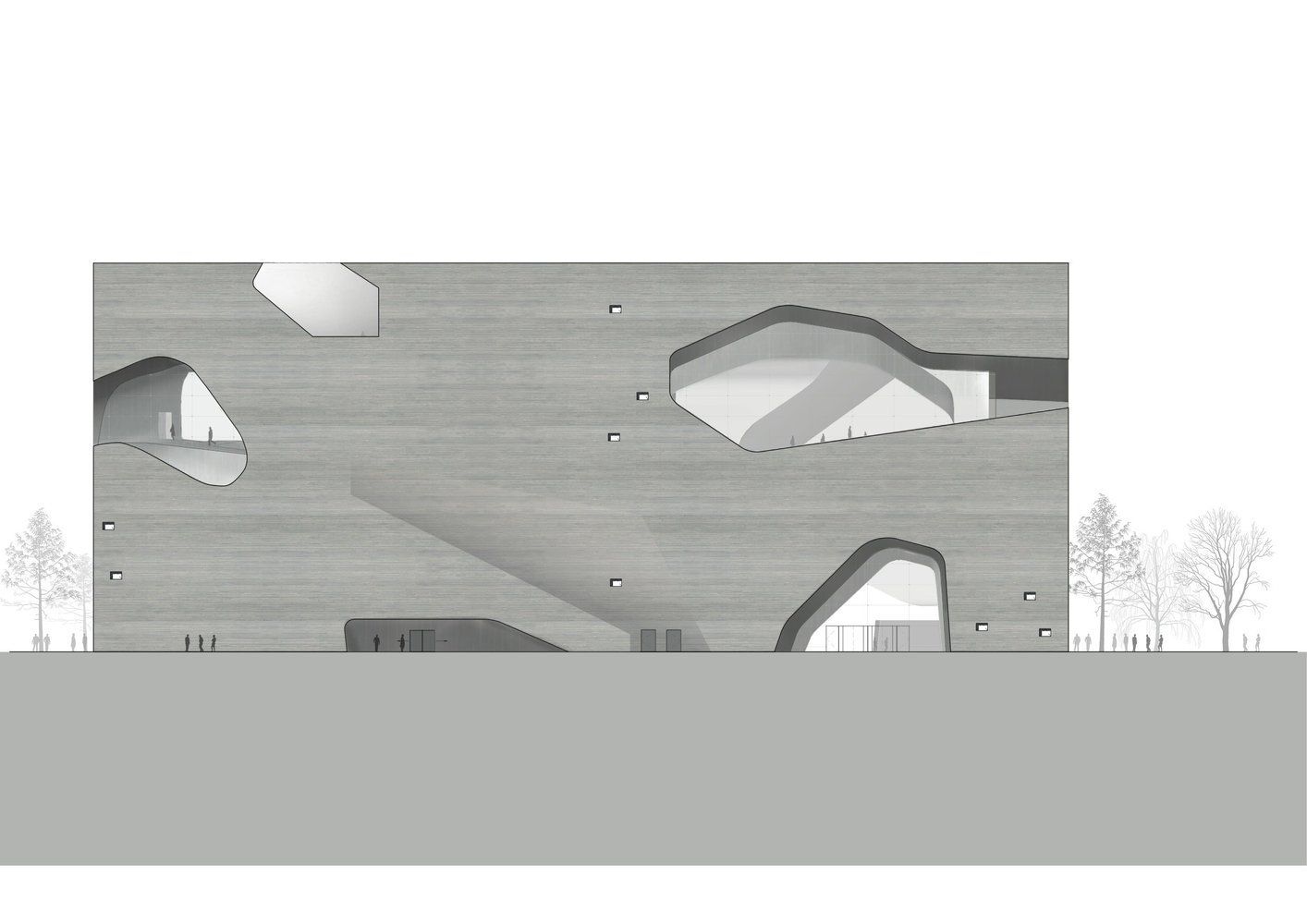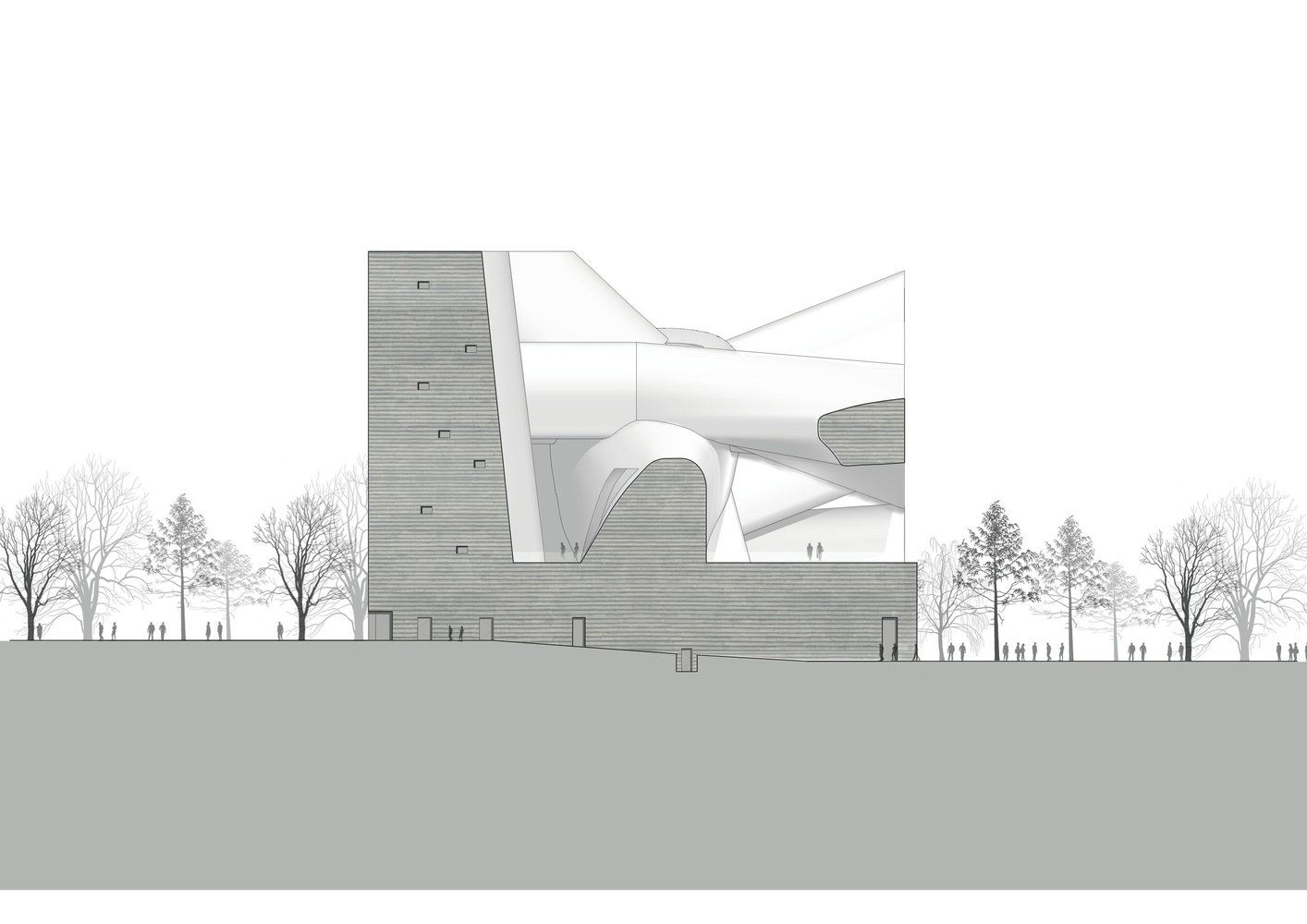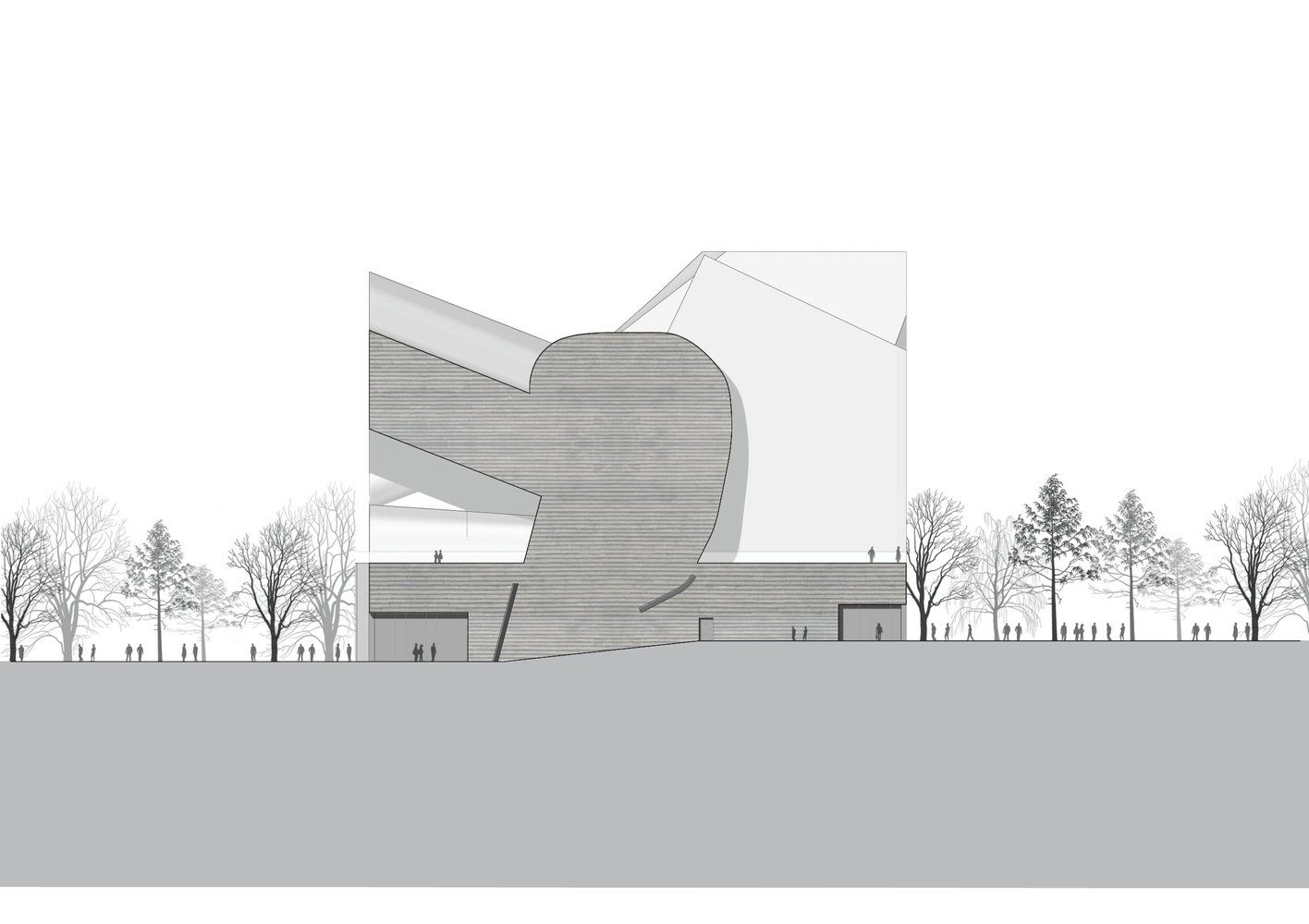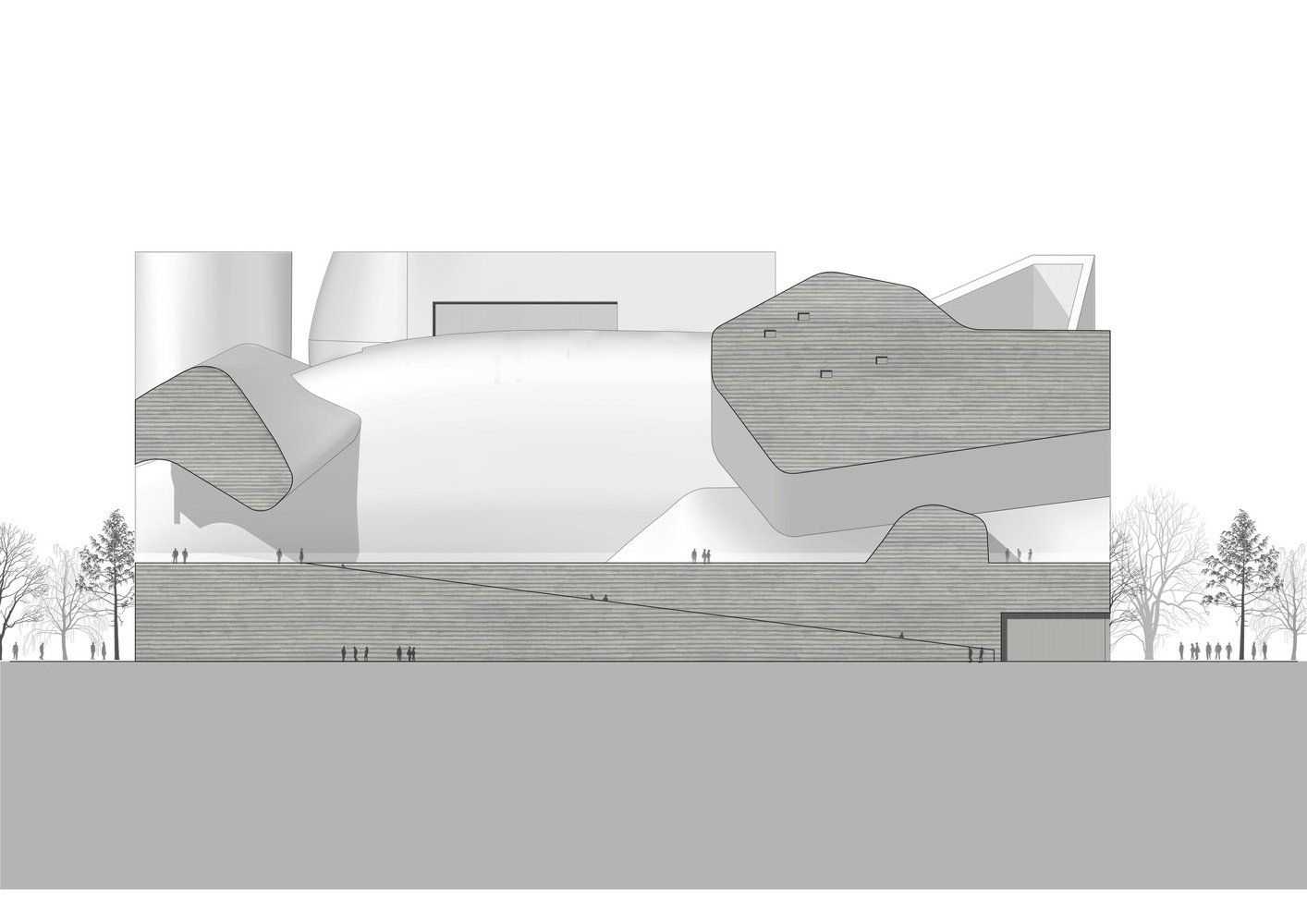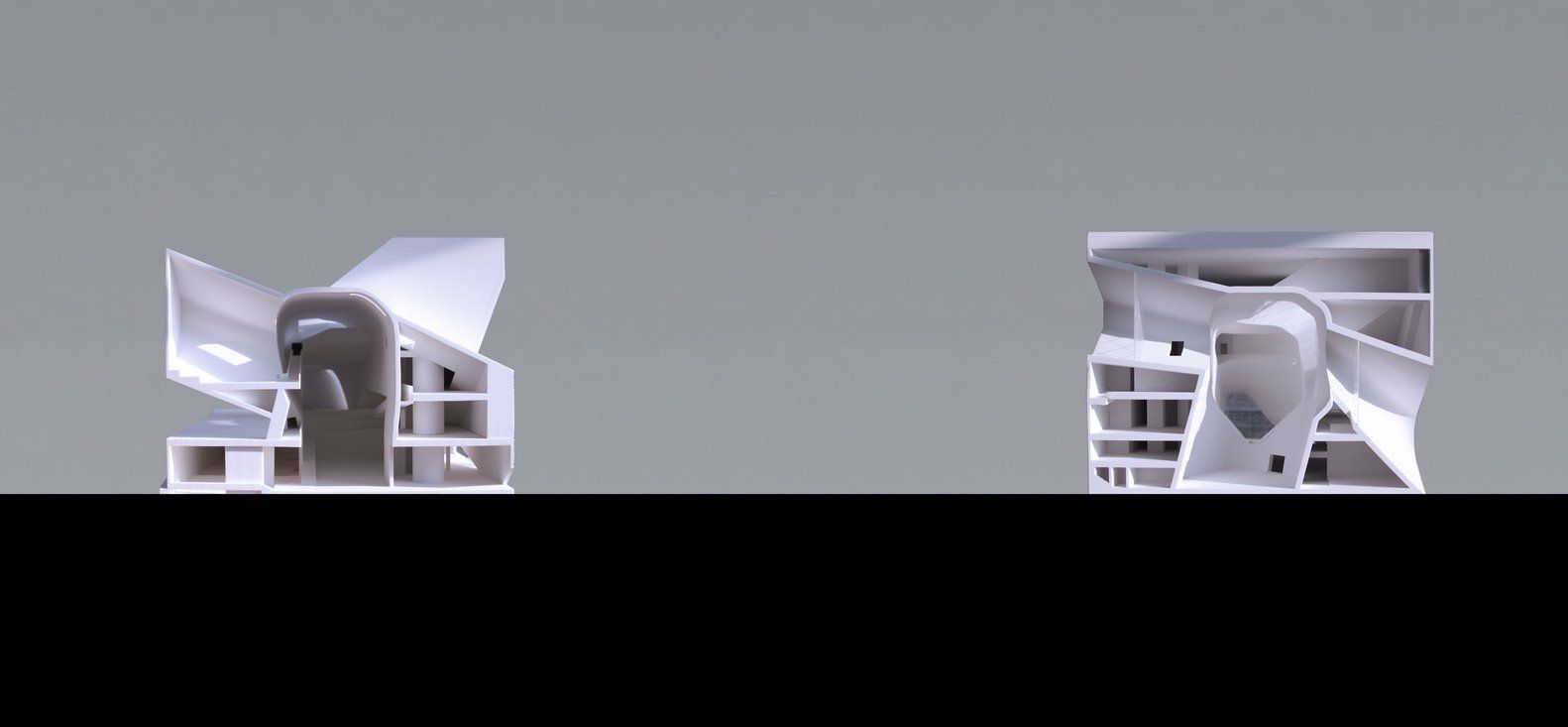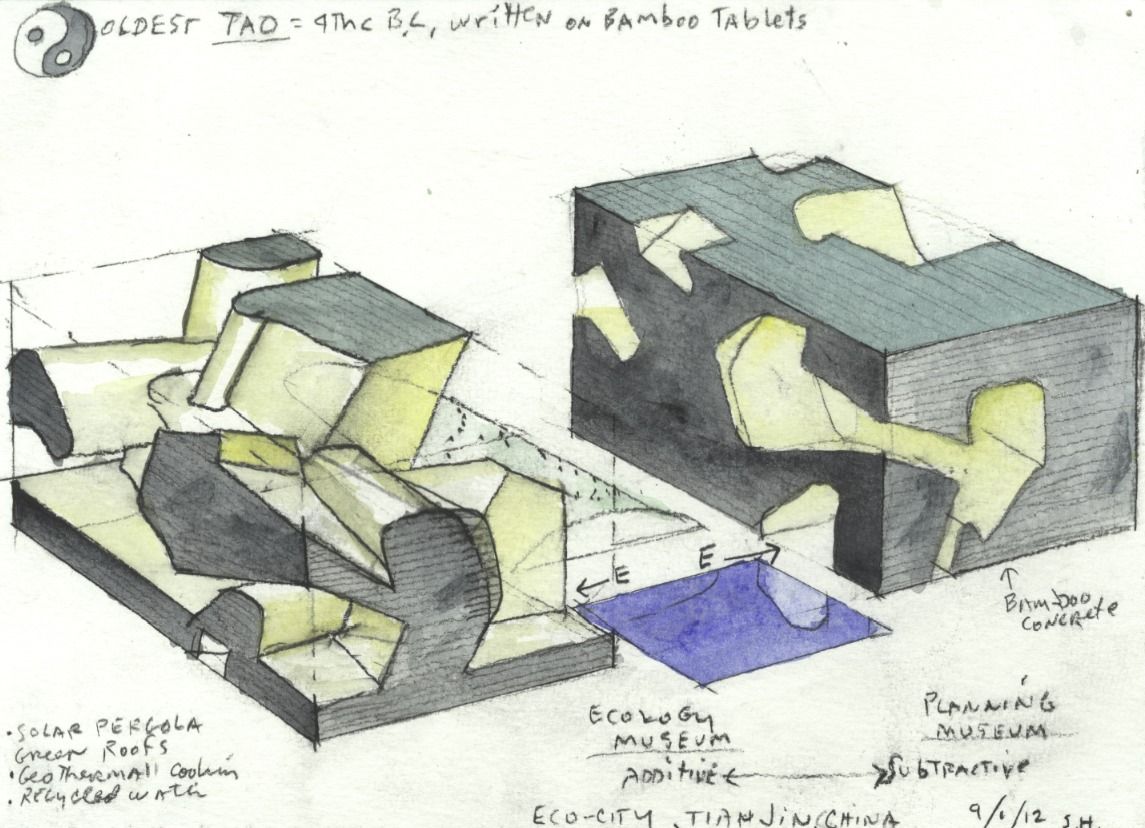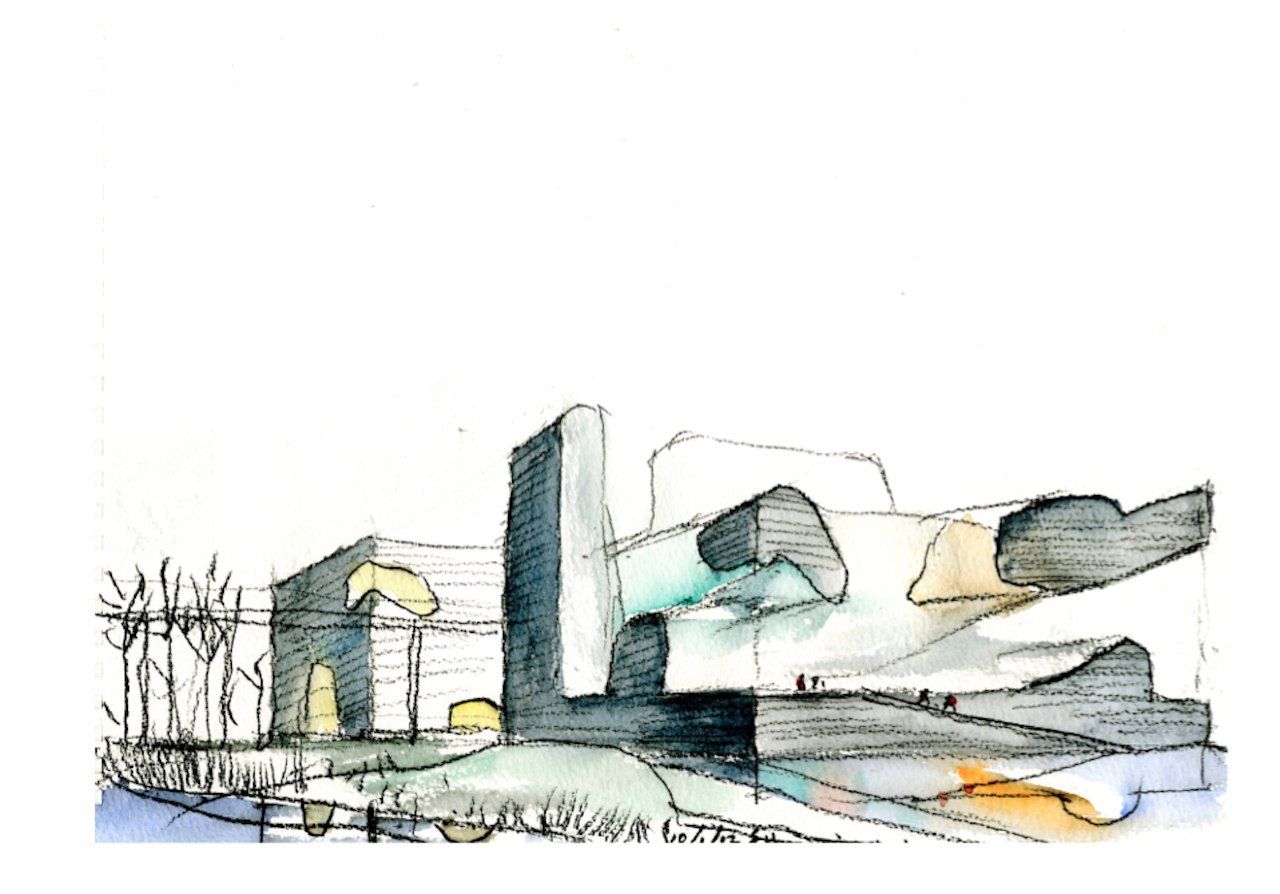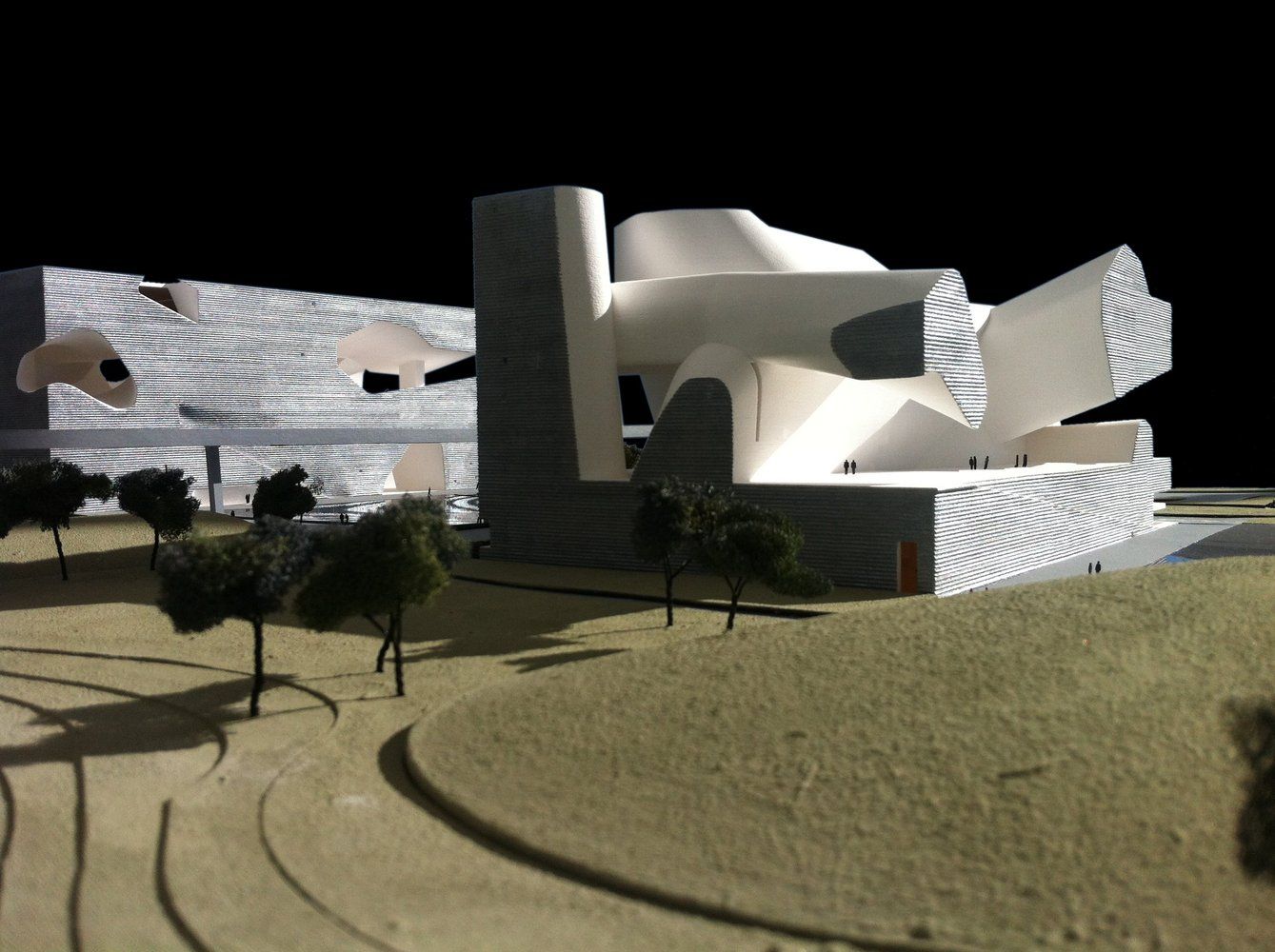Tianjin Ecocity Ecology and Planning Museums designed by Steven Holl Architects, The art of building cities has created masterpieces, places that will never leave our minds while giving us all unique experiences. With the collaboration between the Singapore and Chinese government, a new city designed for 350,000 inhabitants is being constructed from scratch in Bohai Bay, China. This ambitious project’s goal is to become the poster-city for state-of-the-art sustainable aspects, where nearly a third of the “Eco-City” substantial completion is projected to be built by 2020.
The first two buildings for the city’s cultural district, the Tianjin Ecocity Ecology and Planning Museums, are designed by the internationally renowned practice, Steven Holl Architects. The forms of the buildings are relatable to the Chinese “Bau Gua” or “Yin Yang”, where the buildings are designed to be reverse relations of one another. The Ecology Museum is the “additive” complement to the “subtractive” space of the Planning Museum, creating two distinctive structures while keeping a relevant unity that allows the viewer to appreciate the buildings separately and as a whole.
To start, the Ecology Museum is organized around the idea of three “ecologies – Earth to Earth, Earth to Man, and Earth to Cosmos. When one enters the building they first encounter an orientation projection space next to a restaurant and retail opening to the ground level. The second and third levels are dedicated to World Ecology exhibits that sequence up a ramp to Eco-technology. Four outdoor green roof terraces open out from Level 2 as well with living exhibits that change with the seasons. Finally levels four, five, and six, consist of open plan offices with views to spaces below.
The shared public plaza defined by the two buildings distinguishes the entrances for the structures and contains mounds inspired by the huge mounds of shells developed over thousands of years along the Great Ridges of Chenier near the Bohai site. A slice through the mounds exposes the shell specimens embedded in the concrete paying homage to the power of nature and a testimony to time. Being a part of a public space, people can walk to the tops of the mounds to acquire different perspectives for the cultural buildings as well as obtain great views across the river.
Once inside the Planning Museum, there is an introduction area and a temporary exhibition area. The first level also has a large Urban Model Exhibition (all of the Eco-City) as well as a theory and practice zone. With the use of digital projections, the ability to update and increase the information provided in these exhibitions can be easily facilitated to provide the visitor with the latest and greatest data as more is discovered. Level two contains transportation and industry exhibitions with escalators loading to an interactive section and 3D cinema on level three, which also has a restaurant with views out to the sea. Another set of escalators lead up to level five for the Green Architecture, landscape, and water resources exhibitions. The skylit large open top level has access to the green roofscape to finish off the building.
Each museum will be 20,000 square meters with a sub-terrain service zone connecting them, bringing the total construction to 60,000 square meters. A high-speed tram running between these two museums will connect to the central business district of Eco-City as well. With the great expectations of the Tianjin Eco-City, it should be exciting to see what other spectacular buildings and designs come to surface for this project, though the Ecology and Planning Museums by Steven Holl Architects seems to be an inspiring glimpse into what this city has the potential of being.
Courtesy of Steven Holl Architects
Courtesy of Steven Holl Architects
Courtesy of Steven Holl Architects
Courtesy of Steven Holl Architects
Courtesy of Steven Holl Architects
Courtesy of Steven Holl Architects
Courtesy of Steven Holl Architects
Courtesy of Steven Holl Architects
Courtesy of Steven Holl Architects
Courtesy of Steven Holl Architects
Courtesy of Steven Holl Architects
Courtesy of Steven Holl Architects
Courtesy of Steven Holl Architects
Courtesy of Steven Holl Architects
Courtesy of Steven Holl Architects
Courtesy of Steven Holl Architects
Courtesy of Steven Holl Architects
Courtesy of Steven Holl Architects
Courtesy of Steven Holl Architects
Courtesy of Steven Holl Architects
Courtesy of Steven Holl Architects
Courtesy of Steven Holl Architects
Courtesy of Steven Holl Architects


